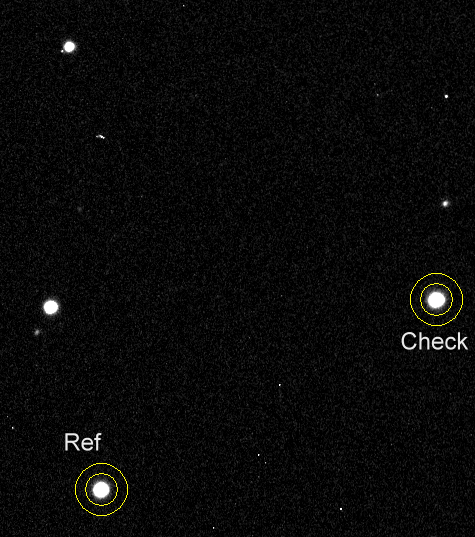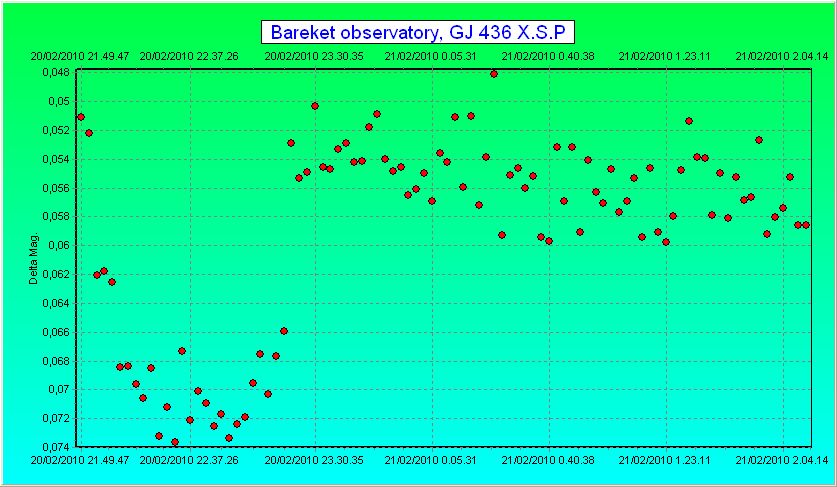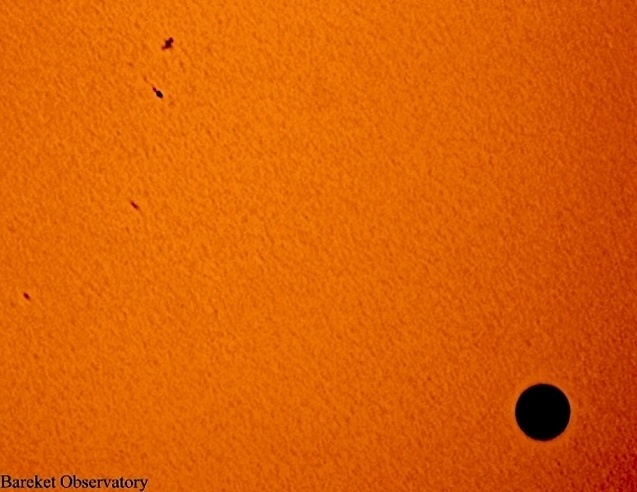On 13th February 2010, we made a special webcast of the transit of an extra solar planet named GJ-436 (and later on also the XO-3b system). You're welcome to join us in this extra-solar quest!
Images from the LIve event:

Image: target stars

Image: light curve of the extra solar planet system! Live view.
Read about this one of a kind project:
The event will be observed using a highly sophisticated robotic telescope and a sensitive cooled CCD camera.
The event will be broadcast on the web from the Bareket observatory's remote EDU Internet telescope, located in Israel. www.bareket-astro.com
The observatory will transfer live images of the transit as they're being captured by the Bareket Internet EDU scope, while plotting its light curve through the site as the transit progress.(see further details below)
This truly amazing process will give students and the general pubic a unique in side view to behind the observatory scenes, while presenting to the viewers how science is being done – all in real time.
This project is a part of the Bareket observatory Live-@stro outreach programs.
The event took about 2 hours in duration, scheduled to take place at
13th February 2010 19:00UTC (21:00 local Israel time)
Image - The planet XO-3b, and the star XO-3 positions.
Credit : DSS survey
EXO Project Transit Photometry
The American Association of Variable Star Observers(AAVSO) is collaborating with Bareket Observatory on variable-object studies, of which transiting exoplanets are a key element. AAVSO have calibrated nearby stars in each of the known transiting exoplanet systems to act as local standards against which you can compare the host star for variability. AAVSO are also working with the XO project team to study other variable stars that they have discovered during their exoplanet survey. Exoplanet transits are hard to detect, since the dip is only one percent or so in brightness, but with care, any amateur observer with a CCD camera can watch the transit of a planet around another star.
Searching for extra solar planets by detecting their transit is well within the possibilities of many today's Earth based observatories.
A transit means – that the extra solar planet acts very similar like Venus, in our own solar system, when it passes in front of our Sun (in a direct geometrical line between the sun and the Earth), featuring a "mini eclipse".

Image - Venus transit; moving in between the Sun and Earth.
Credit : Bareket observatory
Watch the Venus transit – 1st and 2nd contact time lapse:
http://bareket-astro.com/photofiles/img/transit.html
While Venus can be easily observed against the solar disc, the extended XO-3b planet only presented as a dim singular dot in the sky.
While it's total brightness only slightly vary during the extra solar planet transit, for a relatively short period of time.
The drop in the brightness is proportional to the planet’s surface.
Usually within a 1% for a gaseous giant (Such as Jupiter) and as low as 0.01% for an Earth–sized planet.
About the subject of study [XO-3b] :
A massive (Mpsini= 13.02±0.64 MJ; total mass 13.25±0.64 MJ),
large (1.95 ± 0.16 RJ) planet in a transiting, eccentric orbit (e = 0.260 ± 0.017) around a 10th magnitude F5V star in the constellation Camelopardalis.
The planet XO-3b, and the star XO-3, also known as GSC 03727-01064. The orbital period of XO-3b is 3.1915426±0.00014 days.
Further details:
More IYA2009 projects -
- DSO (deep space objects) Web cast – Astronomical year 2009 project. For those who are blind to!


